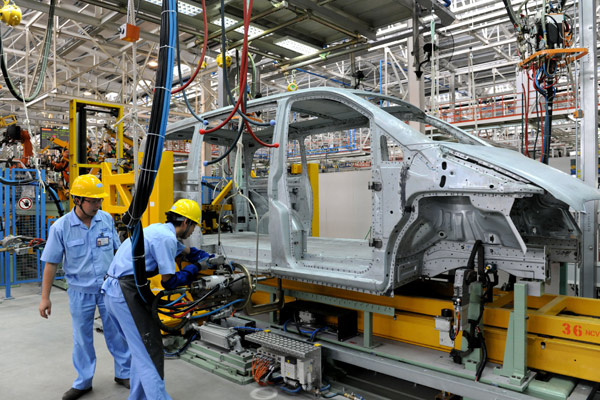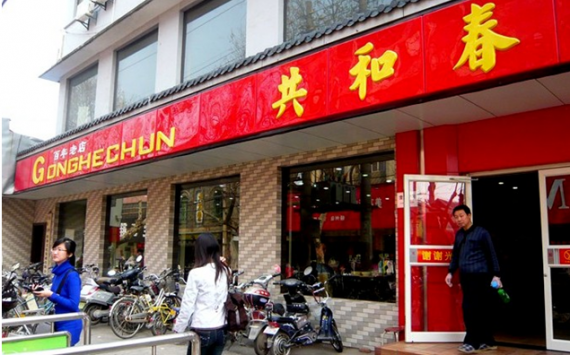Alzheimer’s: China’s Looming Health Challenges — The Diplomat
–
Trans-Pacific View author Mercy Kuo regularly engages subject-matter experts, policy practitioners and strategic thinkers across the globe for their diverse insights into the U.S. Asia policy. This conversation with Peter Fuhrman – Chairman, Founder and Chief Executive Officer of China First Capital, Ltd. – is the 109th in “The Trans-Pacific View Insight Series.†Â
With 9.5 million diagnosed Alzheimer’s sufferers in China, why is Alzheimer’s the country’s biggest future health problem?
I would broaden it to say that the treatment of chronic diseases, with Alzheimer’s at the forefront, is the largest future challenge to China’s national healthcare system. From a country that in living memory only offered a very rudimentary system of barefoot doctors, who were often nothing more than well-meaning but untrained quacks, China in 20 short years has expanded genuine healthcare coverage to all corners of the country, providing acute care and medications to the vast majority of its citizens. That’s an enormous achievement; one that’s done more good for more people than probably any other government initiative anywhere at any time. Chronic diseases, on the other hand, were never a focus, indeed never much of a problem. But, Chinese life expectancy has lengthened dramatically, thanks in part of the improvement in the delivery of acute health services. Chinese are now living as long as people in Europe and the United States. The result: China is already feeling the strain of millions of older ill folks with no real treatment options in place. The demographic die is already cast. Within 25 years, China will become a more geriatric society, where at least 25 percent of the population is over 65. Chronic disease will become commonplace, more prevalent than in any other country.
What cultural challenges hinder or help Chinese society in managing Alzheimer’s?   Â
The generation of people now growing old in China had limited expectations, as they mainly grew up in dire poverty. As they aged, they accepted more stoically that society couldn’t provide much assistance except for immediate medical emergencies. Their children and grandchildren, however, are constituted differently. They often have education and expectations similar to people in the West, including that there should be quality treatment options in China for every medical issue, as there are in the U.S., Europe, Japan, and elsewhere. They increasingly want better treatment for their sick parents, and will certainly expect even more for themselves when they grow older and are diagnosed with chronic diseases like dementia and Parkinson’s, or need extended care and rehabilitation after a stroke or heart attack, both quite common in China. There is still so little care available in China to fulfill this growing need.
What can China learn from the United States and Europe?
Probably the key lesson is to not to expect, as too many in the U.S. and Europe did, a big breakthrough in Alzheimer’s care, the development of drugs to arrest the progress or undo the damage of the disease. The sad reality is despite huge sums spent on research, we’re as far away from such a medical miracle as we were 20 years and at least $20 billion ago. Instead, China needs to foster the development of thousands of quality treatment centers for Alzheimer’s patients, to care for them according to the best global standards, to lengthen and enrich their lives. This requires along with lots of new buildings a huge number of trained doctors, geriatricians, specialist nurses, and aides.
Describe differences between Chinese rural and urban treatment of Alzheimer’s.
Quality healthcare in China is still available mainly in large national hospitals located in major cities. Though the number of rural Chinese with Alzheimer’s is large and growing fast, there is virtually no professional care available for them locally. The government is seeking to change this, not only for chronic diseases, to raise the standards of healthcare in small cities and rural townships, to relieve the huge disproportionate burden on the big urban hospitals.
Identify opportunities for the international healthcare industry in addressing China’s looming Alzheimer’s challenge? Â
Over the next 40 years in China, there is no single area offering better investment fundamentals than chronic care, including the care of Alzheimer’s. Sober forecasts are, by 2045, there will be over 40 million Chinese with Alzheimer’s, four times the number presently. By then, it’s likely half the total number of Alzheimer’s cases worldwide will be here in China. As of today, there are fewer than 500 beds in China for patients needing specialist Alzheimer’s treatment. A French company, Orpea, has a first mover advantage, having already opened a world-class facility in Nanjing. In financial terms, quality Alzheimer’s and chronic care provides very solid returns. As or more important, though, is that the benefits will be captured also by Chinese society as a whole. This will certainly be one of those areas where investors will do quite well by doing good, by contributing to a China where the diseases of old age will be competently managed and families kept happy and intact for longer.


































